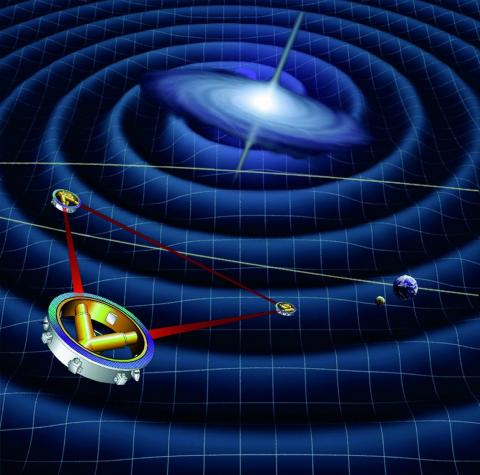
A new exoplanet detector based on gravitational waves
Thanks to the future LISA gravitational wave measurement system, new exoplanet detections, further away than those currently observable, are to be expected.
In recent years, their numbers have been steadily increasing: there are now about 4,000 confirmed exoplanets, and they are just as much waiting for their status to be established. Space observations provide a wealth of information and deepen scientists' knowledge of these telluric or gaseous planets outside the Solar System. However, the studies focus mainly on exoplanets close to the Solar System and located between the latter and the galactic bulb, in part because of the limits of sensitivity of the measuring devices and the techniques.
The work carried out by Camilla Danielski, researcher at the Astrophysics, Instrumentation, Modelisation Laboratory of Paris-Saclay (Université Paris-Saclay, CNRS, CEA), and Nicola Tamanini of the Max Planck Institute for Gravitational Physics, suggests that LISA space mission devices could detect new exoplanets located in remote systems, containing two white dwarfs (or other binary objects composed of compact and very dense objects).
LISA (Laser Interferometer Space Anatenna), of the European Space Agency (ESA), aims at putting, by 2030, three satellites into orbit around the Sun forming a giant equilateral triangle and linked together by laser beams. These satellites will make it possible to detect and measure gravitational waves over a much wider wavelength range than before.
Since the first observations of gravitational waves in 2015, researchers around the world have been interested in using them to detect new star systems. The emission of this particular type of wave occurs when several massive celestial objects (such as black holes, white dwarfs, etc.) orbit each other.
In the Galaxy, there are many binary systems, composed of two or more stars. Most of the stars (97%) end as white dwarfs. By measuring gravitational waves, scientists will be able to detect exoplanets close to this type of system and gain access to all exoplanets in the Milky Way. By coupling gravitational and electromagnetic waves, the full characterization of these new exoplanets will also be available. A further step in understanding spatial immensity.
Nicola Tamanini et Camilla Danielski. The gravitational-wave detection of exoplanets orbiting white dwarf binaries using LISA. Nature Astronomyvolume 3, pages 858–866 (2019).
